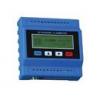
If you go lower than 99% you will notice that the frequencies change with normal ratios. If you open HWMonitor while doing this, you will notice that your CPU frequencies drop directly to the normal frequencies of your CPU (e.g almost always at 3000 MHz before = turbo boost frequencies, and at 1995 MHz after the fix). Then set the "Maximum Processor State" at 99% for both Plugged in and Battery (lower on Battery if you want to save it). THE FIX: On Windows OS, go to the Advanced Power Options, and then under "Processor Power Managment":įirst set "System Cooling Policy" on ACTIVE for both Battery and Plugged in (by default set on PASSIVE on Battery, but it seems wrong except if you lower the "Maximum Processor State" a lot (maybe like 50%).

But the CPU turbo boost mode should be used only for very short periods of time, not all the time like it does here. It is probably handled directly within MacOS, therefore Windows is lost and keeps using 100% of the maximum possible CPU frequencies.

My guess is that Mac motherboards do not handle the turbo boost mode of modern CPUs.

20 Macbook Pro for my part) were overheating so much (reaching 100☌ on both models when fully stressed) with Windows (installed with or without bootcamp), I finally discovered why:

Mac/SMC Fan Control for Windows (+ Temp) is compatible with the following operating systems: Linux, Mac, Windows. This Benchmarking program is available in English. Mac/SMC Fan Control for Windows (+ Temp) is a free software published in the Benchmarking list of programs, part of System Utilities.


 0 kommentar(er)
0 kommentar(er)
